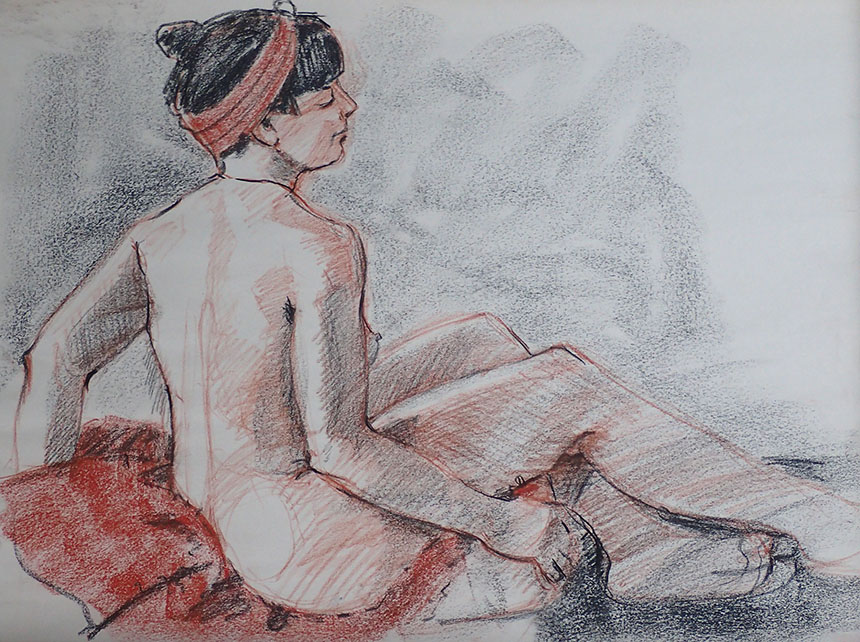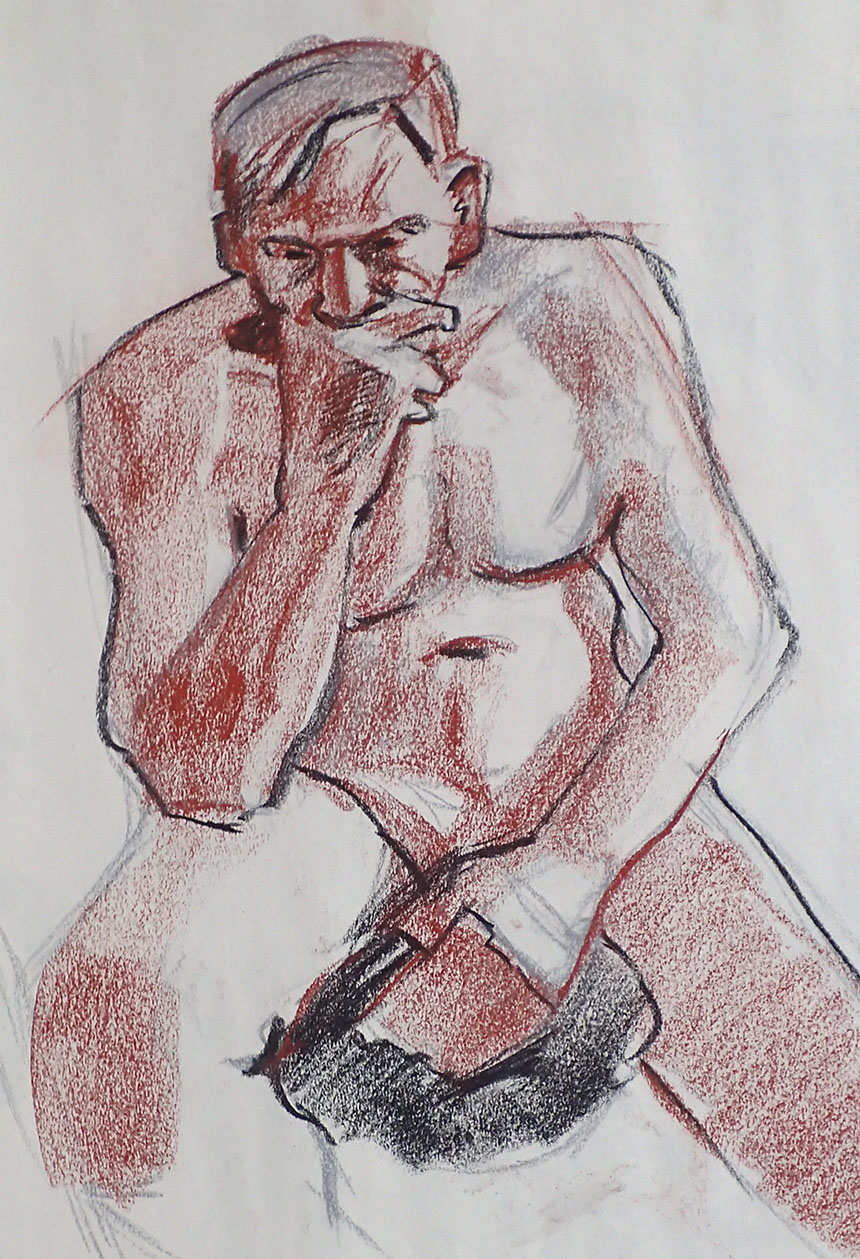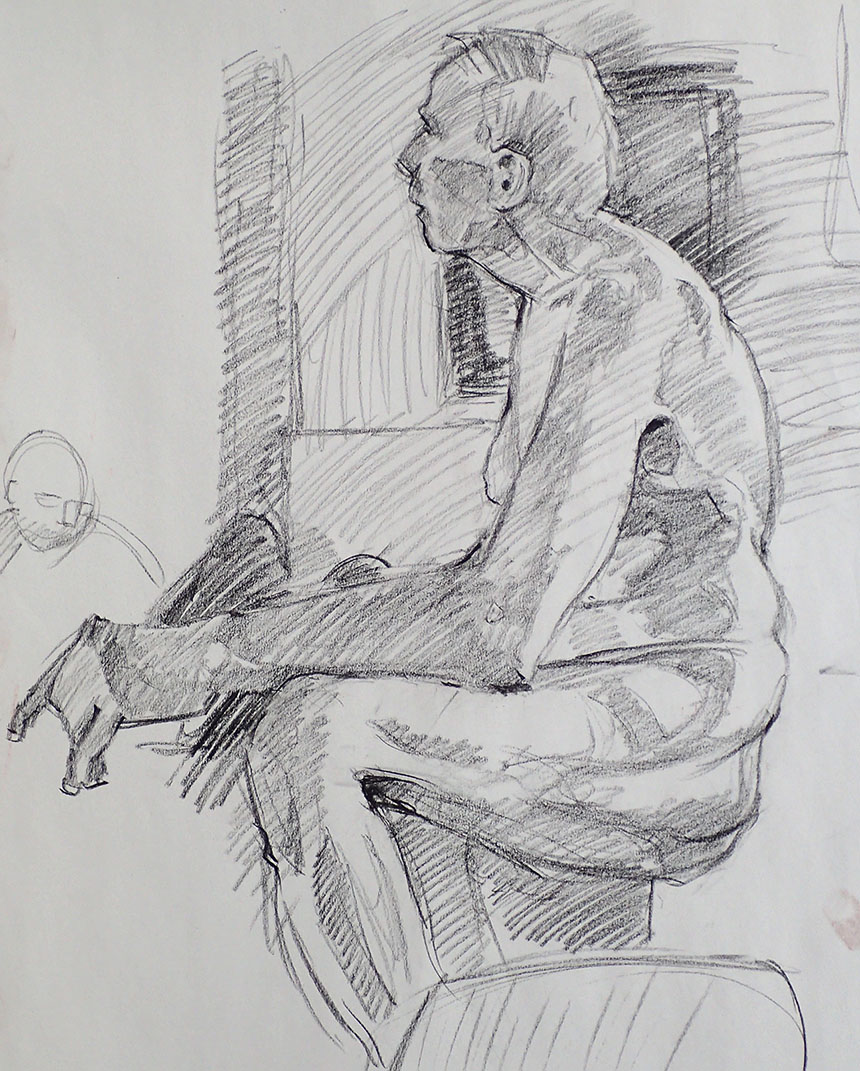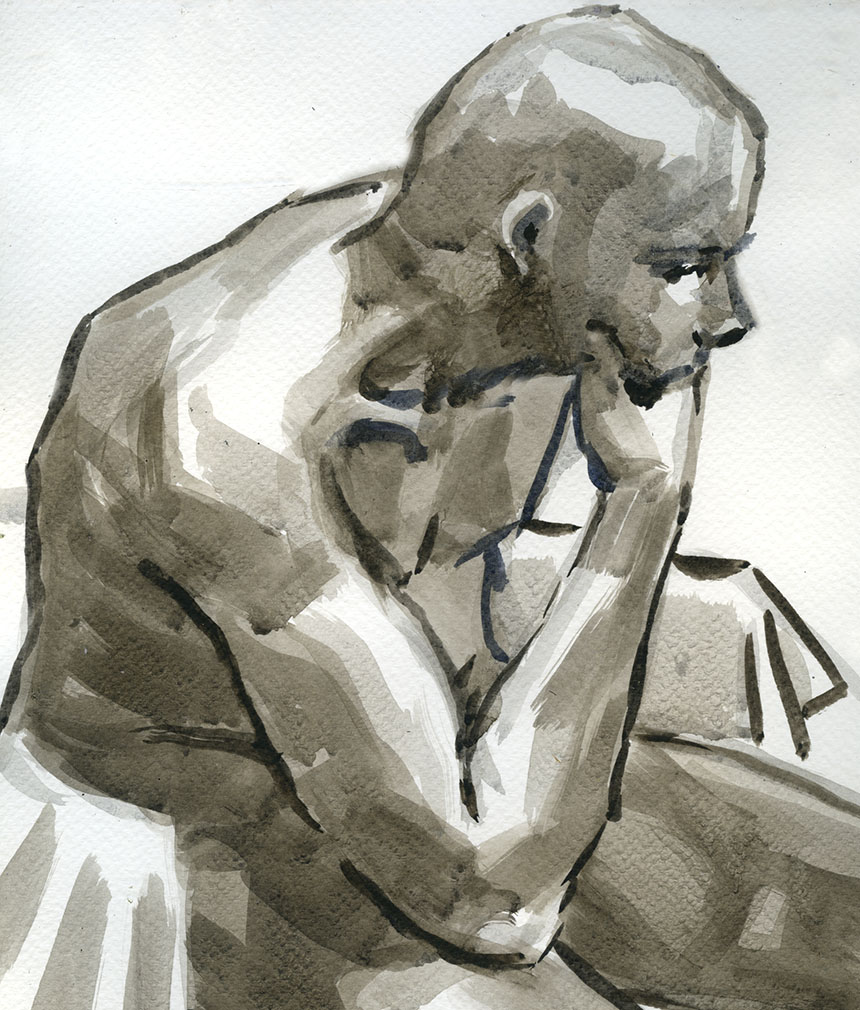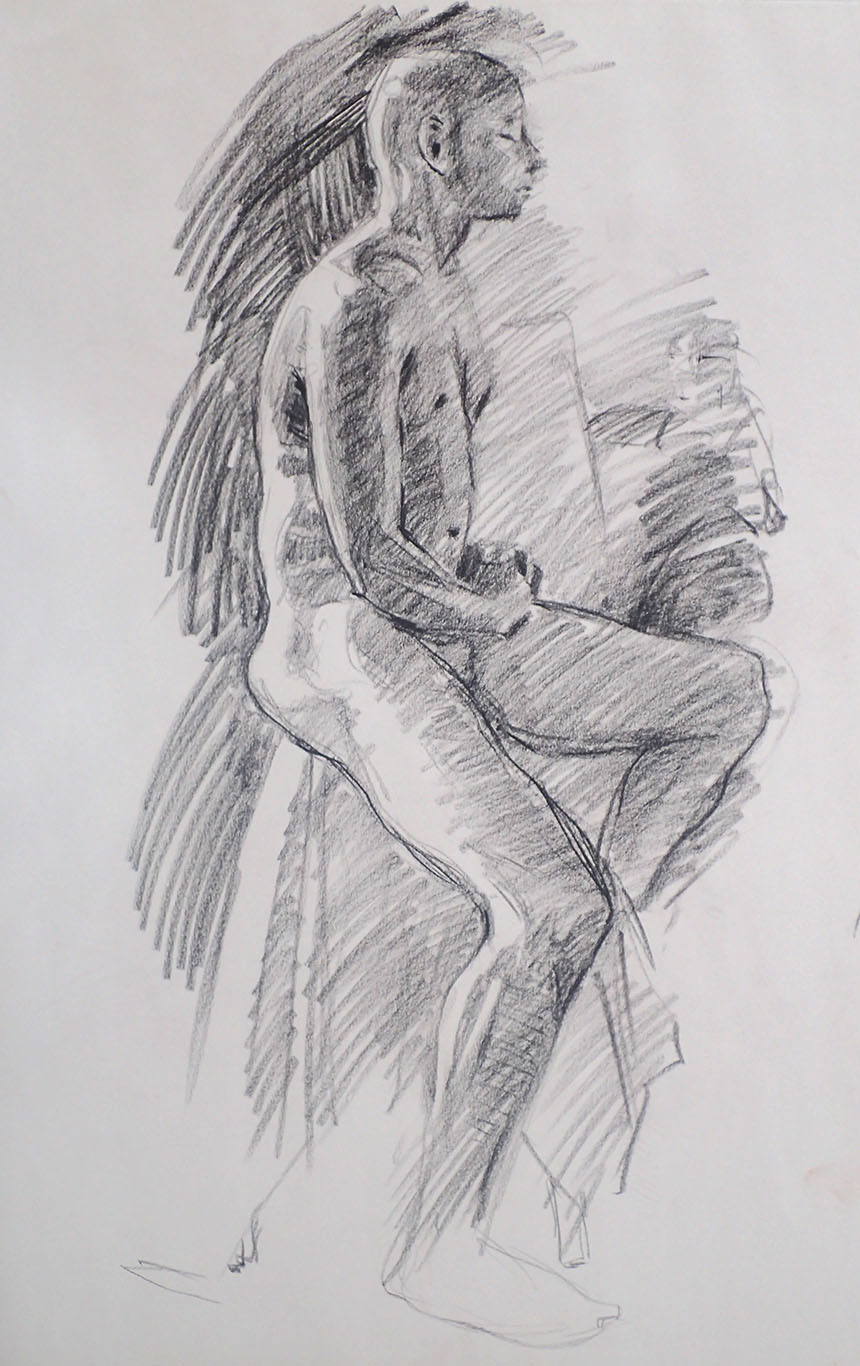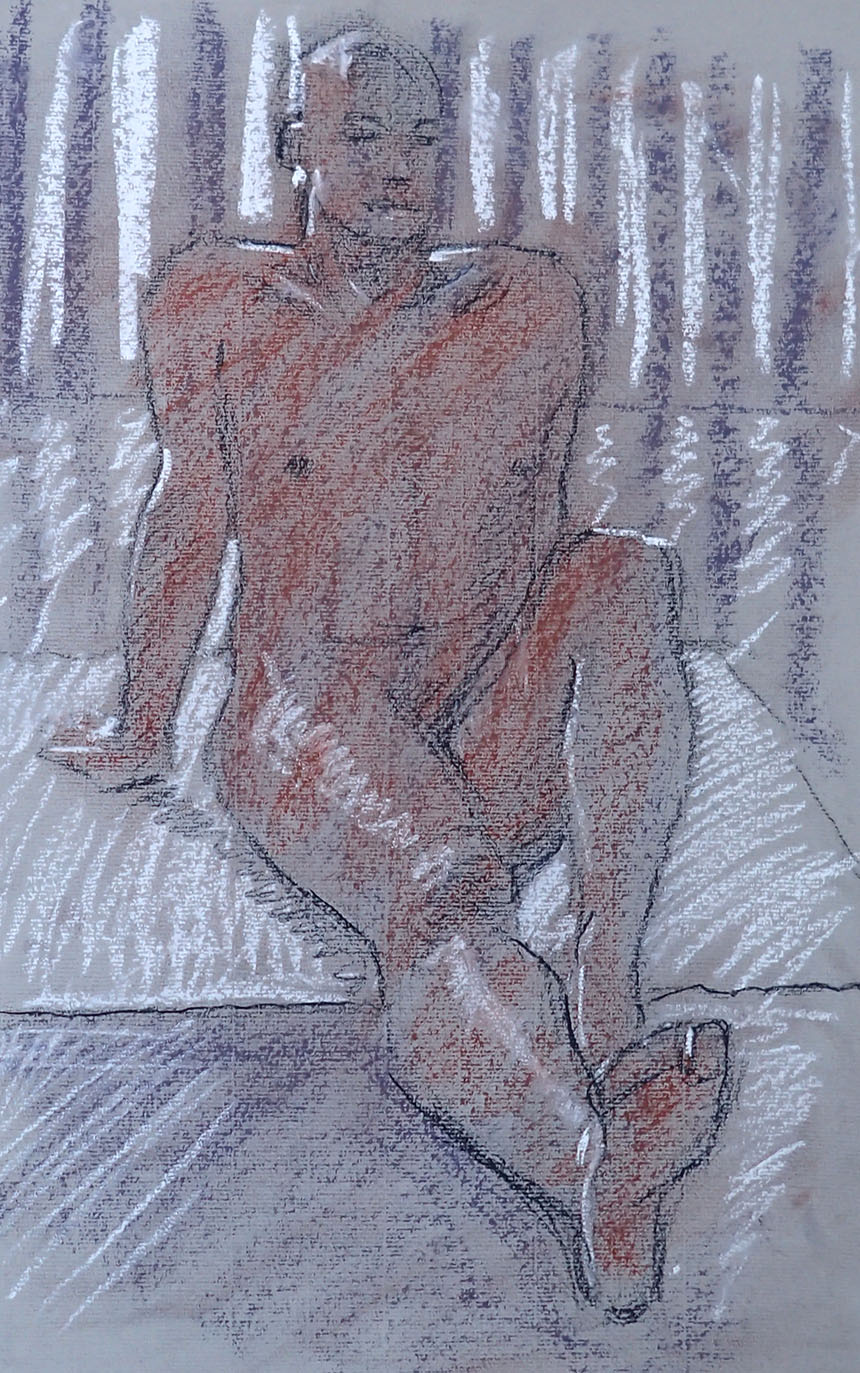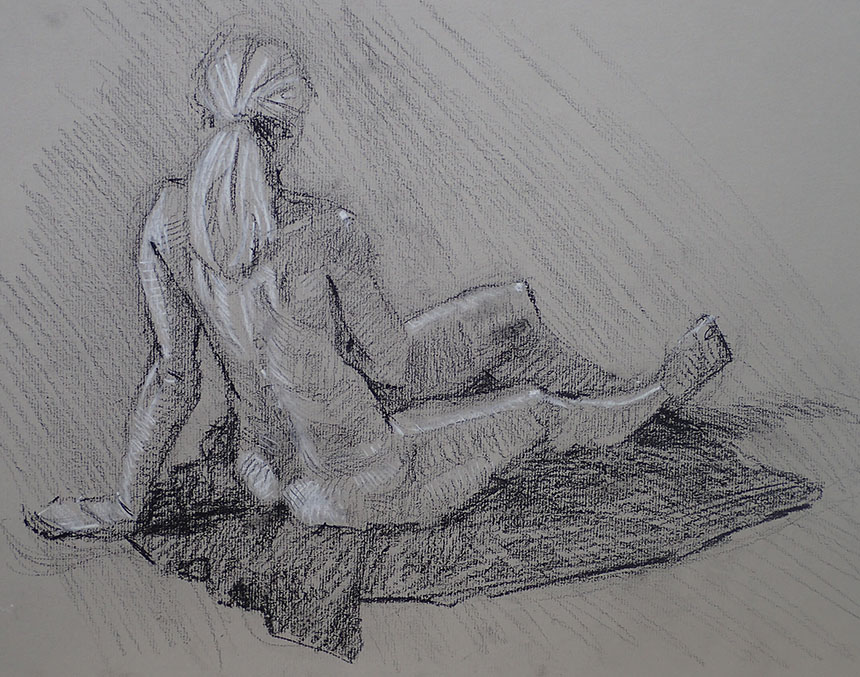We love to talk about accidents. Happy ones of course. We have to “allow” them to happen give them, “space” to occur. We have to be eagle eyed for serendipity, poised to stoop and exploit it. Chance can be out dearest friend, but only if we but let go enough to allow it to work its magic. Throw the dice in the air, spin the coin, pull on the one armed bandit’s single limb, watch the symbols spin. We scorn control, dreary control, the restraining whalebone corset of control. If you don’t throw over the traces the muses won’t speak through you. Stifled by the dead hand of thinking far to much. The flow impeded, the tide dammed, the rush down the helter-skelter road to art nirvana, sapped of momentum.
You must be the child. A child sees, wants and reaches out. You are a free spirit, an ancient soul, a primeval being sadly chained by convention. Released you could fly high to the sun shrugging off the fear of wax melting and Icarus falls. Leaving others to mundane long drawn out Sisyphean struggles with the obdurate stone of skill and craft. Surely somehow we can recover the lost innocence that was cast aside in the hunger for a quick and spurious understanding.
Shrug off the bindings of history, escape the already known, seek the thin ice, the terra incognito. How can you call yourself an artist if you do not attempt at least a few of these things? It is your duty to see beyond. To melt the cold metal of convention and cast it in the air unconstrained by any mould. To make a quicksilver response without the inertia of introspection or intellect.
I dare say many of you will tend to agree or at least lean a little towards the purple prose above. I myself would like it to be true, but it isn’t and there it is, we must live and make do with the lack of hey presto type magic in our world. Do our best with the impersonal mundane clay we have been handed. All talk of “energy” “flow” or whatever is I fear just foolish babble. We must join gamblers anonymous and give up the hope of the smile of chance and luck. No Gods watch over us, no saints intercede, no Norns weave our past and future together. There are no souls chained to our bodies, no spirits allied to our minds.
That is not to say however that there are no random imponderables in painting, or that allowing intellect to be sidelined by unconscious or subconscious routines cannot be a good strategy. Getting the “accountancy” part of the brain off line can allow ingrained learnt processes to run more fluently. You cannot control every motion, every brushstroke, its angle, pressure, direction, speed and duration. Most of this has to be pre-programmed, or as we say learnt. It is a strange thing but the iterative and unfree process of learning a skill actually brings freedom and an escape from technicalities. Without that process becoming ingrained actual freedom will only ever be a pretence. I see it so many times. Painters or drawers acting out freedom, as if mimicking how they feel the actions might be, they could somehow achieve the actuality by some sort of sympathetic magic
Watching a skilled person perform their trade can often look like magic to an onlooker. Many artists receive good money for demonstrating their prowess. For the viewers and students however it mostly looks like conjuring. I suspect some “demonstrators” play to this and build in phoney “abracadabra” audience pleasing moments. As with all conjuring what you see is just the just the tip of an iceberg made of many many hours of practice. In a way the magic is there, it is there when all those many hours of practice, failed paintings, dashed hopes all come together and amplify what you can achieve. Like Icarus for a moment you fly. Does it feel good, yes very, just don’t expect it to happen everyday, or to happen at all without constant practice. Of course you could just carry out the actions, talk the talk and imagine you have brought into being a masterpiece, a sort of air guitar for painters.
So another life drawing post. Now don’t run away, life drawing posts are on average the least looked at posts on this blog, I’m not sure why. Life drawing is where the above seems to manifest a great deal. People put a rather large emphasis on the means of doing it, rather than what is done. They seek the magic formula that will make a winning drawing materialise on their paper. The words, loose, free, expressive etc are bandied around a great deal.
In reality a different kind of drawing is produced depending on what you are looking for. If you are seeking to express the underlying flow of a pose you might produce a drawing with sweeping confident lines. If you are interested in how the edges cross and fade or are soft or sharp you will produce a different more nuanced drawing. If you are interested in how the volumes intersect then a more blocky approach might carry the information best. You might be drawing the shapes the light makes flowing across the surfaces and not the body at all, resulting in a soft impression. Or indeed any combination of any or all of these. Each will result in a different sort of image.
Due to the perception of art history by contemporary artists a fair few folk have difficulty appreciating different sorts of drawing. A drawing with wild inaccurate marks will be praised as loose and free. A drawing that is accurate and plots the ebb and flow of the edges dismissed as tight however good. On the other hand those with little art education will only be impressed with the degree of photographic detail achieved. Academic drawers will judge in yet a different way as to whether the tones and finish are precise and the terminus lines of the shadows emphasised to get that silky classical look.
When I look at the drawings others do my best to look for what the artists were trying to nail down about the pose in front of them. There are successful and less successful drawings in each of the categories above and each should be judged on how well that agenda is executed. The only bad drawing are those that have no premiss or plan behind them or where the artist is not truly engaged, whether they are skilfully executed or not.
I had not done any drawings on toned paper for a while so this was quite tricky. As always a struggle not to put in more than you can actually see.
A more back to basics approach. I was interested in the planes of the pose and how they flowed behind each other. The difficulty is trying to get that down in single unfussy strokes.
So often the quick 4min ones have the most charm. In some ways that is just because they chime well with the aesthetic of our times. I am not in the least immune to this, as with unposed photographic snapshots they have an immediacy that comes across well.
I have introduced a cool grey here. I find it a useful addition so it will stay for a while. I am really trying not to make a “picture” or “finish” in the given time. Just to add one observation after another until the time runs out. As with all “best laid” plans this tends to get watered down by the reality of having to get the marks down.
Here I stuck to the plan more rigorously. Just putting down observations and then restating if need. I quite like the effect of all the good and less good marks being seen as it becomes a record of looking and resolving.
Here I got sidetracked a little by the edges and over emphasised them.
Here I got a better balance with the lines supporting the main interest which was the flow of the gorgeous complex forms making up the surface of the back.
Here the line and flow is more important with the tone in a supporting role.
When I was first taught to draw, Bunny the tutor told us that a drawing should always be finished from the first mark to the last. So when you stop you always have a finished thing. I did not really understand this for many years, but now find it to be a very useful idea. She taught this by not telling us how long the pose was going to be. This meant no planning ahead was possible and each drawing had to be started as if it was only going to be a couple of minutes.
Steve our model was in his eighties and was amazing to draw. Age had melted away all the excess fat revealing the forms beneath.
A difficult one to draw, again the tone is in a supporting role needing to be just enough there to glue the line work describing the edges together.
More quickies. They really do help you winnow out the important and telling aspects of a pose.
Another one where I went a bit to far with the line. It is so so easy to make a line over defined. Ideally it should reflect how strong the edge is and so can go from hard and certain to very soft and undecided. This should reflect what you ca make out clearly and what you cannot. Squinting helps greatly in this regard. If an edge vanishes when you squint then it should ideally be either very soft or not there at all.
This was the second of two drawings done over an hour. In the first one I rather lost my way but the time was not wasted as all the looking helped me be more direct and concise in this one.
I think back to oils for the next session, so looking for light and tone a little more.





